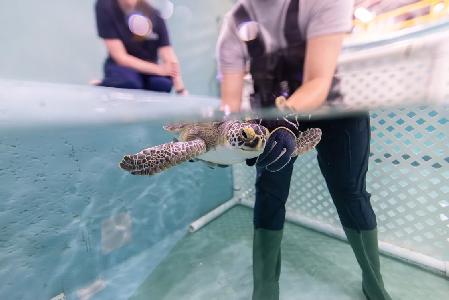This is Technically Baltimore’s weekly One Big Idea. We’d like to use this space to allow technologists, community organizers, activists and other thought leaders in Baltimore city propose one idea for making this city a better place to live and work.
We’ve all heard about how Baltimore is the next Silicon Valley. It’s something we all love to say to make ourselves feel justified in starting and keeping our companies here. The reality is: Baltimore isn’t Silicon Valley, and never will be.
When we can all admit that, we’ll be ready to focus on what Baltimore is, and how we can make it an environment that encourages action. A good start: let’s stop trying to recreate SV by talking about “hustle” and “startup ecosystem” and what Andreessen Horowitz is missing out on by not investing here, and focus on what Baltimore needs.
What specifically does Baltimore need? Many of you already know. Lots of great ideas have been thrown out there, but very few have ever broken ground, let alone completed. Below are a few thoughts on how to create an environment of action.
Own your idea: who will lead this effort?
You’ve probably gone to meetups, conferences and events to discuss ideas on how great Baltimore is and how to make it even better.
You’ve probably walked out of one of these events and thought, “that meeting was great, I had some solid contributions and heard some great ideas.” I know I have. Unfortunately, that’s usually where it ends. We all love the ideas, but nobody wants to jump into the pit and try one out.
Baltimore’s startup community is a friendly bunch. It’s only natural that we all get together and brainstorm on great ways to put the city on the map. Unfortunately, when there’s a room full of idea people and no clear goals defined, everyone spins in a circle. We leave the meeting with twenty ideas and no strategy. All twenty are great, but which one do we move forward with? More importantly, who’s going to own it?
Think more about what you can take ownership of, instead of just floating an idea. So before you leave that meetup, define: who will take control of that project or initiative?
Don’t ask permission: do it and they will follow
Get out there and execute without waiting for a unanimous vote, or consensus. If it fails, great, we have 19 other ideas to try out.
If an idea makes sense and it’s in your power to move, do it. When something has momentum, others will naturally want to join in and help. The folks who can participate, will.
Ask anyone in Baltimore if they’re a proponent of change/progress/success/positivity in Baltimore and 100 percent of them will say yes. But how many of them will be the first one to put a plan into motion? Start something cool, and people will follow.
We don’t need the city’s help to make the city better
Lower taxes, new incubators, and securing city grant money are all great ways to keep the momentum going, but there’s a lot more that can be done culturally. Instead of trying to get the city (or other government or institutional partners) on board before moving forward with an initiative, get out there and do it first, then invite the city to join in and help. If it’s just an idea, the city can choose to say no. If it’s happening whether the city likes it or not, they’ll have no choice but to join in.
Follow the leaders: plenty of examples exist
Look around at the great things that have emerged in Baltimore in the past couple years: the Beehive, Betamore, Betascape, TEDx, Ignite, etc. Each happened because someone jumped in without asking first. Use their strategy as a model and bring your idea to fruition, making Baltimore a place that rewards action.
Join the conversation!
Find news, events, jobs and people who share your interests on Technical.ly's open community Slack

Baltimore daily roundup: An HBCU innovation champion's journey; Sen. Sanders visits Morgan State; Humane Ai review debate

Baltimore daily roundup: Medtech made in Baltimore; Sen. Sanders visits Morgan State; Humane Ai review debate

Baltimore daily roundup: The city's new esports lab; a conference in Wilmington; GBC reports $4B of economic activity


